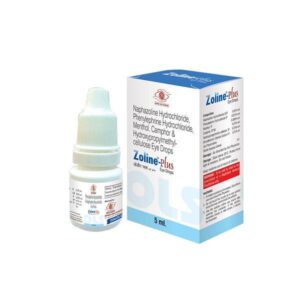CAMPHOR + HYDROXY PROPYL METHYL CELLULOSE
Camphor: Camphor is a medication commonly used for its topical analgesic and anti-itch properties. It is available in various forms, including ointments, creams, and lotions.
Camphor works by stimulating nerve endings, providing a cooling sensation while also numbing mild pain. It is often used to relieve itching, minor burns, and muscle aches. Additionally, camphor has some antifungal properties and may be used to treat fungal infections, such as athlete’s foot.
The dose of camphor can vary depending on the specific product and the condition being treated. It is important to follow the instructions provided on the packaging or as directed by a healthcare professional. Camphor should only be applied topically and should not be ingested or used on open wounds.
Though generally considered safe for most people when used as directed, camphor can have some side effects. These can include skin irritation, redness, and allergic reactions. Ingesting camphor can be toxic and may cause symptoms such as nausea, vomiting, seizures, and liver damage. It should be kept out of reach of children to avoid accidental ingestion.
It is important to talk to a healthcare professional before using camphor, especially if the person has any underlying medical conditions or is taking other medications that may interact with it. They can provide specific instructions on proper use and advise on any potential risks or contraindications.
Hydroxy Propyl Methyl Cellulose: Hydroxy Propyl Methyl Cellulose (HPMC) is a medication that belongs to the class of ophthalmic lubricants. It is commonly used as an artificial tear to relieve dry eyes and to prevent further irritation or discomfort caused by insufficient tear production or certain eye conditions.
The main mechanism of action of HPMC as an artificial tear is to provide a lubricating film over the surface of the eye. This helps to moisten and soothe the eye, reducing dryness and discomfort. HPMC also helps to stabilize the tear film and prevent it from evaporating quickly.
HPMC eye drops are typically instilled into the affected eye(s) as needed. The usual recommended dose is 1 to 2 drops, several times a day. However, it is best to follow the specific instructions provided by your healthcare provider or listed on the product packaging.
Side effects of HPMC eye drops are generally uncommon, but some individuals may experience temporary blurred vision or mild irritation upon application. If any of these side effects persist or worsen, it is important to consult a healthcare professional.
It is worth noting that HPMC eye drops are for external use only and should not be ingested. If accidental ingestion does occur, seek immediate medical attention.
Overall, HPMC eye drops provide temporary relief from dry eyes and help to maintain proper eye lubrication. However, it is important to consult a healthcare provider before using this medication, especially if you have any pre-existing eye conditions or are currently taking other medications.

